Do you remember those cold winter nights when it was required that we keep our window open. It was the rule that we keep a window open every night regardless of season. However, those West Virginia winter nights, and those cold concrete rooms with no heat made my business all the more in demand. I charged twenty five cents a week per room to go all over the dorm and quadrangle and shut the windows after the officer in charge (faculty and cadet) had gone to bed.
The business was most successful. In those days (probably 1946 or so) a quarter was a lot of money. That Christmas for the first time I had saved enough money to buy my mother a meaningful present, a Waring Blender. 46 was the first year the Waring Blender was on the market. Why I was not caught plying my trade in the middle of the night is a good question. Unfortunately the business was seasonal and come spring time I went back to sleeping all night.
Mr. Zicafoose was in command of the furnace which heated the entire school and there was no heat till he fired up the monster furnace in the morning. I'll never forget how cold those rooms were till the radiators started banging the welcome news that heat was on the way.

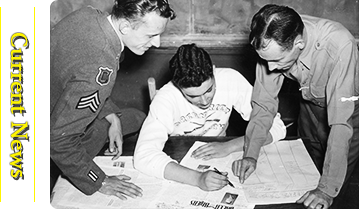
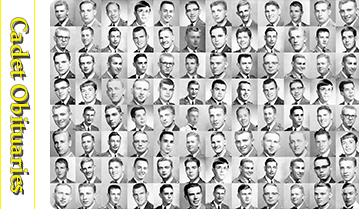

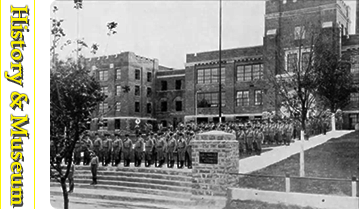



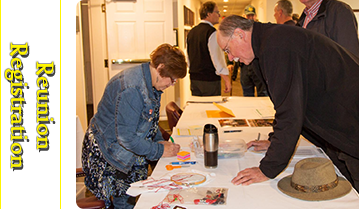


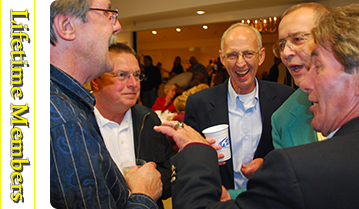
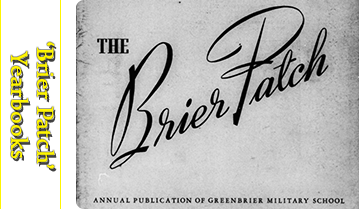



Comments
Open window
That was my first job in life. I'll never forget it as getting up in the middle of the night was no easy task. And it was always so cold as there was no heat anywhere in the school.
Open Window
The "Open Window" regulation was indeed a form of forging men tough enough to withstand adverse conditions as might occur in the military service. Most guys I knew withstood those cold nights amicably. Honestly, the cold forced most of us to hustle to get moving in the mornings more quickly, and to head to the mess hall for that first cup of coffee... Typically, the mess hall was warm, as was our coffee and after quick smoke, we were glad to get to our classes for a few hours and warm up...
Deak Roberts, '56, Grows Up At Lock 18 and Goes To Greenbrier
Deak Grows Up at Lock 18, Ohio River, Vienna, West Viginia
They called us River Rats. West Virginia, the Mountain State, is really not all mountains. Its western border is the Ohio River waterway, and a major part of the massive Mississippi drainage system for the Midwestern part of the country. It is a little known fact that West Virginia does indeed own the Ohio River to within 10 feet of the State of Ohio bank.
I grew up in the small town of Vienna, just north of Parkersburg, and I suppose you could consider Vienna a suburb of Parkersburg. The Parkersburg Country Club is located in Vienna, and it was there I used to earn money as a Caddy. I was a strong, stocky young man in those days and I could carry double. It was good money and big money for me. My golfers used to hit the ball over in the bottom land corn. I would offer to go get it, but nearly all the time they told me to let it go. Of course, I went back later and got the balls. I had an excellent collection of nearly new golfballs to play with. Monday was Caddy’s day to play. We could borrow member’s clubs and play the course. The golf course did indeed have total view of the Ohio River and it was quite beautiful.
I saw the great Sam Snead play there once in the Ohio Open. It was one of his 82 tournament wins, a record to this day. Snead was a West Virginian and the Pro at the famous Greenbrier Hotel and Resort in White Sulphur Springs, WV. I had no idea then, but the Greenbrier Hotel would become an important part of my life later on. It was only 9 miles from Lewisburg, WV.
Lock 18 is located at Vienna and runs over to the Ohio side just north of Belpre. The actual locks where boats go through are located on the Ohio side. The dam across the river has openings in the middle and on the West Virginia side consisting of a pair of lock walls with an adjustable weir between them that can be raised and lowered to control the amount of water going through the dam. Lock 18 became one of my playgrounds growing up, and it was fascinating. Not every kid gets an opportunity to have a playground like this. You could fish off the boulders lining the bank just south of the Lock or you can fish off of the lock walls.
PARKERSBURG—MARIETTA---VIENNA METROPLEX (Photo -- did not transfer. Map of the area.
As a swimmin’ hole, it was the best. Behind the dam, it was about 30 feet deep and calm. The bank on the shore was high up with very tall trees that had natural vines hanging down. We would swing out over the water like Tarzan and drop into the cool, refreshing pool. It was glorious and something most kids could only dream of.
I did a lot of fishing at Lock 18. Sometimes, I didn’t even need to take any fishing pole or bait. If the river was down, exposing some of the boulders we referred to as “The Rocks” that normally were underwater, you could go down there and get line and hooks caught around those boulders, then go up on the bank and turn over a log and pick up some beautiful nightcrawlers. The catfish loved these big juicy worms. You then had all the ingredients you needed to go fishing. My favorite fishing spot was from the lock walls themselves. The water going over the weir created an ominous looking churn at the bottom where literally thousands of minnows were in the churn being tossed everywhere. It was an ideal place for Bass and other fish to come and feed. Of course, if they saw something as delectable as a nightcrawler, they would hit that.
I would always fish from the Second Wall, the one furthest into the river. The way you got there was pull yourself over on this rope and pulley system rigged between stanchions on each wall. You had to take all your stuff with you, your tackle box, your fishin’ pole, your bait can or minnow bucket, and anything else, like food and drink. Sometimes you had to make two trips. The lock walls out in the middle of the river had the exact same set up. To get out there, you had to walk a very narrow steel catwalk behind the dam that was sometimes below the water surface. Trust me, it was not easy. That’s why you never saw anybody fishing from the middle of the river, except me. I loved it out there. It was quiet and peaceful and no other people to get your line tangled up with. To me, it was just ideal and the perfect place to fish in the Ohio River. One day, I caught a six pound Channel Cat out their. That was the biggest, bluest, most beautiful Channel Catfish I had ever seen. He was big. I hauled him up through town on a Stringer, and people came running out of the houses to see it. Nobody had ever seen a Channel Cat like that. They asked,”Whatcha gonna do with it, Deak?”. I said, “I’m gonna skin it. My Mother is gonna cook it, and we are gonna eat it.”. They said, “Ain’t you afraid to eat it out of the Ohio?”. I said, “ This here is a clean livin’, God fearin’, genuine Channel Cat. He ain’t no bottom feedin’ Mud Cat . This boy will be good to eat.”. We did, on occasion, fish out of the River huge Mud Catfish that weighed up to 100 lbs. They were bottom feeders and were not good to eat, although some of the River Rats ate parts of them.
The river there at Lock 18 was approximately a 1 mile wide. A big River to be sure. Getting out there in the middle was no easy task, but I liked it so I did it. I wanted to go over to the locks on the other side and see them operate when the big coal barges came up the river headed for the steel and power plants at Weirton and Pittsburgh. It was not possible because some previous winter a barge had broken loose and crashed into the catwalk. There was no way to get across the damage.
I went fishin’ out there quite a bit, and every now then a person would be standing on the Ohio Side locked wall and they would wave. I would wave back. It was too far for really seeing the person. I believe it was a man, but no way to be sure. It got so the person came down there quite frequently and we would always wave. It was kind of nice that someone from the Ohio side recognized I was in the middle of the river fishing, so it got so I looked for the person every time I went out there.
Back in the real world, it was time for me to go to high school. Believe it or not, I had a choice. I could either go to Parkersburg High School, a huge school with an enrollment of nearly 5,000 students coming in from all over Wood County, or I could go to Greenbrier Military School (enrollment 450). Dad was affluent enough to send me and we had talked about it some. The way it came about was Dad owned a small string of ready-made Curtain and Drapery Shops, original one in Parkersburg, one in Marietta, Ohio, and the other in Clarksburg, West Virginia. His managers in Clarksburg, Harry and Margeret Greene, had sent their son, Tom, to Greenbrier (Class of ’48). The military school was located in Lewisburg, West Virginia, clear over on the other side of the state in the mountains. I had visited Tom when we went to Clarksburg several times, and Tom had filled me in on his experiences at Greenbrier, and I found them fascinating.
So, I made the choice and it was Greenbrier. I hated to leave all my friends back home, but it was what it was. I mentioned the Greenbrier Hotel earlier (above). It would be the scene of our Final Bell at Greenbrier Military School, a magnificent culmination of three years of High School. It would take place in the Main Ballroom at the end of my Senior Year. The event was White Glove and the epitome of Antebellum splendor with the
“Queen of the Brier” and her Court in hooped formal dresses, and I would actually perform with the other Cadet Officers the incredible silent drill known as “To The Winds”. With no commands and in complete silence with Sabers in hand and shouldered, we silently started off in formation at a half-step, then broke off individually and marched in all directions, eventually returning to the formation we started with. It was amazing to watch and something that deserved and received a standing ovation.
So, off I went to Lewisburg, a quaint, historic town in the Greenbrier County Valley, and boy, did my life ever change in a hurry. I went from never taking a book home for nine years to studying for two hours every night. I went from mostly undisciplined behavior to totally disciplined behavior, because if you got out of line, you got to walk “The Beat”. Your superiors gave you demerits for infractions of the rules and for every demerit, you got to spend a half hour walking “The Beat”. That got old very quickly when everybody else was going to the movies on the weekend, and you were walking “The Beat”. “The Beat” was a rectangular sidewalk around the flagpole, and you didn’t just walk it, you got to march in step with the others and usually toting a 9 pound M-1(WWII Standard Issue) Rifle. If the weather was inclement, they moved you Into the quadrangle where it was dry under the stoop. It was not pleasant.
For me, I wised up rather quickly and stayed off “The Beat”. I became a pretty good military person. Good marching with the rifle and executing drill maneuvers. This came to the attention the Army ROTC personnel who ran the military side of the school. It was they who advanced people in rank and judged Companies and Platoons during parades and military competitions. I was promoted to Corporal at mid-year and Sergeant at the end of the year. Next year, I would be the leader of the first Squad in the second Platoon of Company “D”. I was a high school Junior now and moving up in the Greenbrier ROTC military world.
Some of us Sergeants would get together every now and then to discuss
our mutual problems. It was good because I got to meet some of the other Sergeants from the quadrangle side of the school. Company “D”
was in a dorm at the other end of the school and there was not a lot of opportunity to meet the other Sergeants. I was talking with several of the others one day about my home in Vienna, and one of the boys said he was from Belpre, Ohio. The town of Belpre was just across the bridge from Parkersburg, so we began talking. He said his Grandfather was the Lock Master at Lock 18. That stopped me cold. I couldn’t believe what I was hearing and I was totally speechless. His name was Russell Yates Smith who lived with his Mother in Belpre and his Grandfather Yates was indeed the Lock Master at 18. Then he said it. He said, “A really funny thing happened last summer. Every time I went to visit Grandfather, there was some guy out in the middle of the River fishing off the Lock wall. He was probably from Vienna. It was a man, but that is all I could tell. We would wave to each other. ”. I must have looked crazy as a loon looking at him and said, “Oh my God. This is not real, but it has to be. There is no other way you could know.”. Russ looked at me and his fair skin turned white. He said, “My God, was It you?”. I said, “Yes, it was me.”. We hugged each other and started laughing. We became very good friends after that. We visited each other’s homes when on Leave from school. I went out on the wall he waved from. We did not go out in the River. It was Winter and the pulley systems had been removed. Besides, it would be far too treacherous to go out there.
As a Sergeant, Russ was First Sergeant of Band Company, and the next year, our final year, Russ was made Company Commander of the Band with rank of Captain. I was promoted to 2nd Lieutenant and commanded the First Platoon of Company “D”. At mid-year, I was promoted again to 1st LT. If I would have come back the following year, I would have been in command of Company “D”. I did not return. I went to College instead.
So, to conclude this incredible story, Russ outranked me in our graduating year and I was very happy for him. He did a magnificent job. The Band was superb. We were both one of the 16 Officers in the school, so we remained great friends and did our jobs of taking care of our troops.
Russell Yates Smith passed away way too soon (May 28, 1995), at Age 56.
In 1957, Company “D” was commanded by Lee Hadley who had the 2nd Platoon in 1956. Lee was the Funeral Director in Marietta when Russ died, and he conducted the Funeral and Burial.
It was ironic Russ graduated from Greenbrier Military School in 1956 and died at age 56. He was well liked by everyone at Greenbrier because he was a wonderful, jovial, sincere, genuine, quality, caring human being who I am most proud to call my special friend from Lock 18. May he rest in peace for eternity.
Photo of Lock 18 did not transfer
Deak Roberts, Class of ‘56